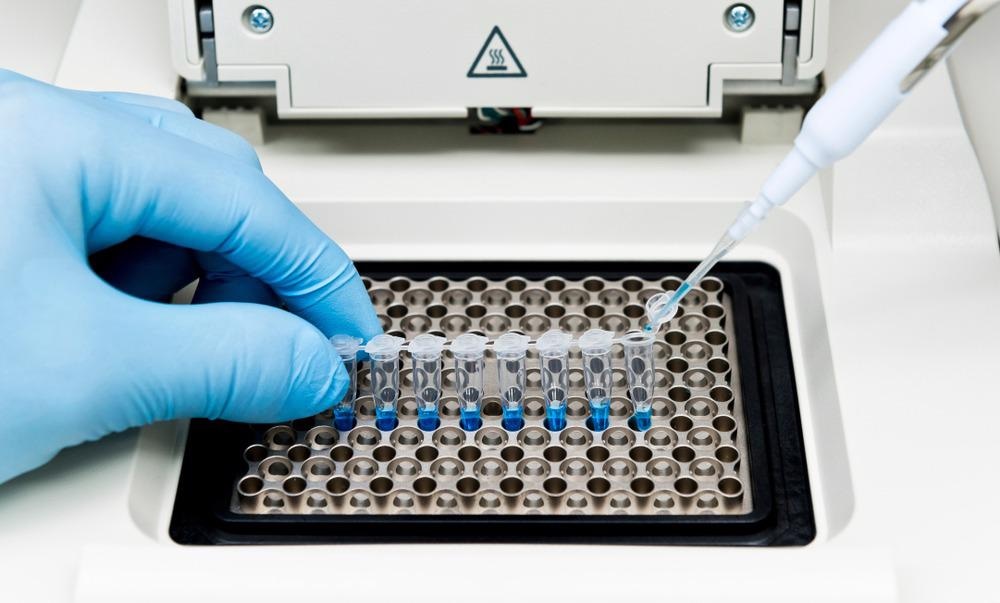A team of researchers recently published a paper in the journal ACS Langmuir that demonstrated the effectiveness of using porphyrin assemblies as nanocarriers for deoxyribonucleic acid (DNA).

Study: Adsorption of DNA Oligonucleotides by Self-Assembled Metalloporphyrin Nanomaterials. Image Credit: unoL/Shutterstock.com
Porphyrinsan Biosensors
DNA nanobiotechnology has been used extensively in recent years, with applications relating to drug delivery, biosensors, disease diagnosis, and biological imaging. Graphene oxide (GO) and metallic nanoparticles such as gold nanoparticles (AuNPs) are often used to detect small molecules or nucleic acids by physically absorbing aptamer and DNA probes in biosensors.
Two-dimensional (2D) materials and different metal oxides were studied extensively to investigate their applications in biosensors. However, macromolecular organic compounds such as porphyrins have not been studied on a similar scale for biosensing applications.
Porphyrins are widely used in applications related to photodynamic therapy as they possess robust light capture ability, rapid electron injection, excellent optical properties, and good biocompatibility. DNA and molecular porphyrins can form different binding structures.
Additionally, porphyrins possess a high molar extinction coefficient, which can be useful to develop biosensors as they can reduce the fluorescence of fluorophore-labeled DNA. However, porphyrins are typically insoluble in water and highly hydrophobic in nature. The solubility of porphyrin in water can be enhanced by preparing porphyrin assemblies.
Previous studies have demonstrated the effectiveness of iron porphyrin assemblies (FePNPs) in detecting the fluorescence of nucleic acid. However, more information is required about the influence of the porphyrin assembly morphology and aggregation structure in the detection and adsorption of nucleic acids.
The Study
In this study, researchers used zinc meso-tetra(4-pyridyl)porphyrin (ZnTPyP), a metalloporphyrin building block often used extensively in antibacterial, biophototherapy, and photocatalysis applications, to investigate the influence of zinc porphyrin assemblies with multiple aggregation structures on DNA adsorption.
ZnTPyP, DNA samples, 1 M hydrochloric acid (HCl), 1 M sodium hydroxide (NaOH), N-(2-hydroxyethyl)piperazine-N′-ethanesulfonic acid (HEPES), and emulsifiers that include sodium dodecyl sulfate (SDS), myristyl trimethyl ammonium bromide (MTAB), and cetyltrimethyl ammonium bromide (CTAB) were used as starting materials for the study. Milli-Q water with 18.2 M Ω resistivity was used to prepare all solutions in the study.
Transmission electron microscopy (TEM) with 200 kV acceleration voltage was performed using a JEOL IEM 2010, while an ultraviolet-visible (UV−vis) spectrophotometer was used to obtain the electronic absorption spectra. The crystalline structures of every porphyrin assembly were assessed using the X-ray diffraction (XRD) technique, while the zeta potential values were obtained using the dynamic light scattering (DLS) method.
0.5 mL ZnTPyP solution was quickly added into a 9.5 mL aqueous solution containing 0.01 M emulsifier and NaOH with rapid stirring, and then the resultant mixture was constantly stirred for 48 h at 25oC. In the final reaction system, the concentration of ZnTPyP was 0.5 mM.
The synthesized ZnTPyP assemblies were obtained at 15,000 rpm and subsequently washed two times with Milli-Q water to eliminate impurities and excess emulsifiers. The ZnTPyP assemblies with various morphologies were prepared using different types of emulsifiers, varying the ZnTPyP concentrations or adjusting the pH by NaOH.
Ten μL of carboxyfluorescein (FAM)-12-mer DNA was mixed with 90 μL of HEPES buffer containing ZnTPyP assemblies and incubated at room temperature for 10 min. Subsequently, the ZnTPyP assemblies were separated from the mixture by centrifugation at 15,000 rpm, and the fluorescence intensity of the assemblies containing the nanoabsorbed DNA was determined using a microplate reader. The reduced fluorescence in the assemblies was used to measure the DNA adsorption percentage.
The experiment was repeated with different DNA samples without changing the adsorption time and the concentration of porphyrin assemblies and DNA. The pH of the HEPES buffer was varied to determine the DNA adsorption in different pH values. Additionally, the adsorption of double- and single-stranded DNA were determined. DNA adsorption percentages of ZnTPyP assemblies were also measured after treating them with ethanol and urea.
Observations
Different aggregated ZnTPyP assemblies were synthesized and characterized successfully. Among the five ZnTPyP assemblies synthesized in this study, four assemblies were positively charged. A limited extent of DNA adsorption was observed in the negatively charged ZnNPs-6, indicating that other interaction forces were much stronger than the charge repulsion on the porphyrin assembly surface. The observation confirms that DNA adsorption can happen even when the charge of the DNA is the same as that of the assembly surface.
The porphyrin assemblies with a hexagonal stacking structure, specifically ZnNWs-6, exposed more functional groups that allowed hydrogen bonding and facilitated greater DNA adsorption. Hydrogen bonding was verified after the ZnTPyP assemblies were washed with urea.
No significant effect of the DNA length and sequence was observed on the adsorption percentages. The adsorption of single-stranded DNA was relatively more effective than the adsorption of double-stranded DNA, indicating the role played by the DNA bases in the adsorption process.
To summarize, the findings of this study provide a reference for the synthesis of novel porphyrin/DNA assembly composite materials and the surface interactions associated with them.
Reference
Wang, J., Wang, Z., Liu, J. et al. (2022) Adsorption of DNA Oligonucleotides by Self-Assembled Metalloporphyrin Nanomaterials. ACS Langmuir. https://pubs.acs.org/doi/10.1021/acs.langmuir.2c00108
Disclaimer: The views expressed here are those of the author expressed in their private capacity and do not necessarily represent the views of AZoM.com Limited T/A AZoNetwork the owner and operator of this website. This disclaimer forms part of the Terms and conditions of use of this website.